Last Updated: September 20, 2019 Swati Mishra
So far incredible things have been done in the world through commitment and wondering about it, one such name that pops up in not only my mind but all of ours is the name Mahatma Gandhi. If we be honest to ourselves and take a look into the life of Mahatma Gandhi, we would come across what actually made him a great man. Born in a middle-class business family in a coastal city Porbandar (Gujarat), as a child he did not show great potential. In fact, he was neither an extraordinarily intelligent man an artist nor even a good lawyer. But as history reveals that this man made a commitment towards changing the world which made him the actual hero and a person whom we still remember, especially on 2nd October every year (i.e., Mahatma Gandhi’s Birth Anniversary).
Is Mahatma Gandhi Still Relevant?
Being one of the most influential and famous personalities of India, Mahatma Gandhi had a profound influence on Bharat Swatantrata Abhiyan (Indian Independence Movement). His beliefs and ideas towards anything were beyond anybody’s imagination which he kept practicing all throughout his life. His teachings, convictions and beliefs are such that it could inspire one.
Okay, talking about- Is Mahatma Gandhi Still Relevant Today, a whole book can be covered talking about his ideas. He was a visionary in a true sense and was a man with a strong and powerful mind which led him to write about the human issues and problem faced by people in India. The basic human issues which he talked at that time are still relevant today. For that matter let’s talk about how Gandhi’s teachings can help us grow:
Intolerance
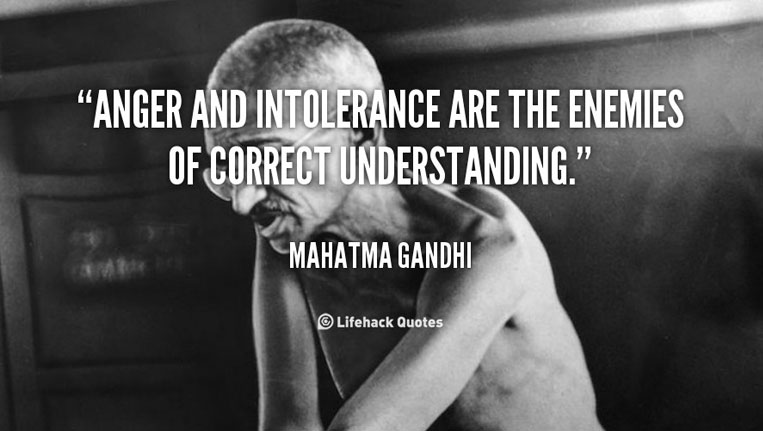
Source: https://bit.ly/2N3OeB4
The intolerance which is dividing and tearing our society gradually. Digging deep into the nature of Gandhi, he was a compromiser and dealt with the problems by considering both the party’s point of view. This helped him come up with a fair solution that was accepted by all (applicable in both legal and political affair). Okay, how we can work on the comprising nature? Well, this could only come if we become tolerant to other person’s point of view and refrain from imposing our’s or majority’s opinion on them.
Non-Violence
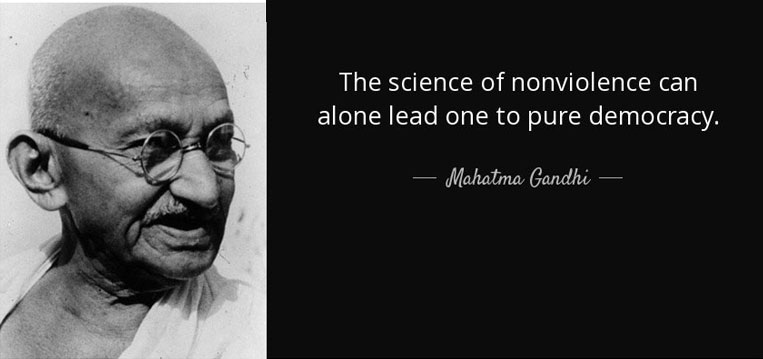
Source: https://bit.ly/2IlRDLb
Nonviolence or ‘Ahimsa’ which means non-killing was the rule and breathe of Gandhi’s life which has a wider meaning (and the basic principle of Gandhism). His teachings included avoiding the injury to anything on earth whether it be in thought, word or deed. In the sense, not just by the physical action even a harsh speech to someone or thinking bad of others is a form of violence. The prime intention hidden behind Gandhi’s concept of non-violence was to establish peace and harmony in human society by changing the nature and attitude of man by heart and soul and he was successful in doing it.
Talking about the present-day scenario of non-violence, the concept has lost its importance. Every other day we hear the news and witness violence and brutality. But not everywhere it is being practiced as there are still some places where people have faith in nonviolence. They remember the teachings of Gandhi (one of the most admired people in the world) and practice it to use the principle of nonviolence in their day to day life. So, yes we can say that Gandhism is relevant even today.
What Makes Mahatma Gandhi Loved by Everyone?
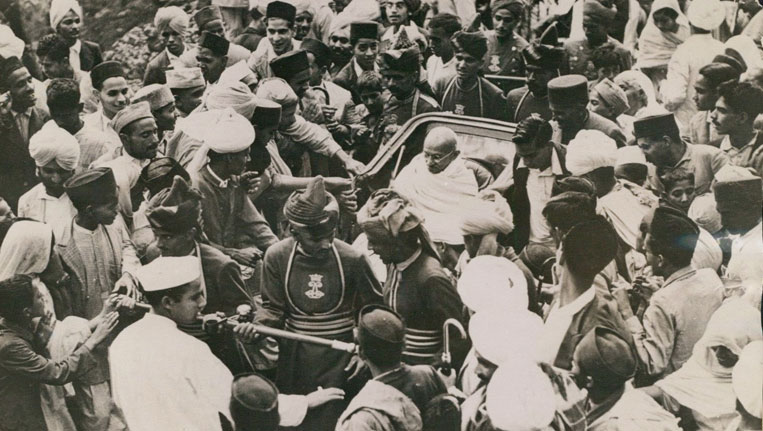
Source: https://bit.ly/2DxkP2Z
Basically, the title Mahatma which has been given to Gandhi comes from the two Hindi words ‘Mahan’ and ‘Aatma’ which means Great Soul. The title was given to Gandhi based on his nature and character that he possessed. When Gandhi was asked about what message he would like to give to the world, out of modesty he said, “My life is my message”. So here are the qualities and virtues we should learn from the great life of Mahatma Gandhi and implement the qualities in our lives. Let’s get started and see what we can learn from Mahatma Gandhi:
The Heart of Forgiveness
As we are aware of how ill Mahatma Gandhi was treated and even was thrown into jail, was beaten on the roads. Not just this, but people raised their voice to kill him. But it was Gandhi’s forgiving heart that made him utter not a single word against those people. Rather he forgave all of them who hurt him in any way.
We all need to learn the habit of forgiving people. The reason behind doing so is not just a great quality which we can build within ourselves but we can also let go of the negativity that surrounds us. So forgetting things and forgiving those who did bad to you will help you live a positive life.
Learn from The Mistakes
As already discussed in the introduction part, Mahatma Gandhi did not possess great potential and like every other person, he too was never perfect. In the sense, if we go in details then he lied, he stole, he fought, indulged into temptations and what not. But this didn’t stop him from learning from the mistakes that he committed throughout his life. The best thing is, he always strived to avoid making the same mistake twice.
It okay to make mistakes but repeating the same mistakes over and over again won’t help us. If we really want to grow then it is very important to acknowledge what wrong we are doing so that we can refrain it from doing again.
Developing Self Faith
Lived a simple life, didn’t have a very attractive physique and always tried to avoid the limelight. He basically did nothing to earn fame, but it was because of his qualities that he is still remembered by all of us and regarded as one of the greatest persons in the history. What made him loved by all is the belief in himself. Yes, he was committed towards the country and believed that he has a great responsibility to free his country.
All of us have the caliber and ability to do something, but it is really not good to chase after the limelight. For if you do so, you aren’t going to earn it. Believe in yourself and in what you do to accomplish any task.
Love and Don’t Believe in Hatred
So, this is one such quality which might take time to develop but it isn’t impossible and it does works in your favor. If you implement such actions in your life then it can help you in building everlasting relationships. It was love and humbleness of Gandhi in what he spoke, that led India become and independent country.
Walk on The Path of Truth
By profession, Gandhi was a lawyer and as it is said that this profession requires lying and cunningness, but still Gandhi never resorted to lying and promoted truth throughout his life. In fact, he named his own autobiography: “My Experiments with Truth”. So it is very important that we all develop a habit of speaking the truth even if our voice shakes.
Believe and Live in The Present
Gandhi believed in living each moment at fullest and he didn’t waste time looking back into the past or wondering what the future is going to be. Similarly, life is going to be easy if we start to believe and focus on the present. Let your worries go and prioritise what you have in present.
Take the First Step and Do it anyway
When in school and later when he went to England, Gandhi himself had to suffer from procrastination. But when he realised, he devised this method of taking the first step and doing the task anyways knowing that not all the actions taken would be important but the concern is not to regret by not doing it.
What was Mahatma Gandhi’s Contribution to Humanity?

Source: https://bit.ly/2Q8M6Kt
In one word- GENDER EQUALITY
Gandhi’s contribution to humanity cannot be measured in words. It was his ideologies, policies and agendas that were non-violent and his words stood out to be the source of inspiration for millions. One such contribution of Mahatma Gandhi to humanity was violence and gender equality. As in the patriarchal societies, it is always believed that women should remain confined to their families and be submission towards their husbands, Gandhi was not in favour of this practice and so to resolve the issues that the women were facing he gave a totally new perspective regarding gender equality. He was not only opposed to the harmful practices and encouraged regeneration of women but gave the idea that women are not just equal and different but superior to men. So coming forth, Gandhi (one of the popular social activists) worked on the prevailing customs and practices like the;
- Female Infanticide, where he believed and discovered that the birth of a girl was generally unwelcome as she was to be married off and had to live and work in her marital home. Gandhi was clear on the views that whether its a boy or a girl, one should rejoice as the world needs both of them.
- Female Illiteracy, where Gandhi believed that lack of education and information was the roots cause of all the evils against women. He believed and came up with the solution that education is imperative for women as it is for men.
- Child Marriage, where he looked the practice as an immoral and evil act. He believed and conveyed that both the boy and the girl should be developed physically and mentally at the time of marriage and that they should have a voice in choosing their life partner.
- Purdah System, where Gandhi regarded it as inhuman and immoral, for it impeded the march towards Swaraj (self-rule) by restricting women. Not just the women freedom but it also denied the free gift of God. He appealed to the public in general and women, in particular, to tear down purdah.
- Sati System, where Gandhi found the practice to be the blind egoism of men. It was so unfair for a woman whose husband is dead to go and get burnt alive on the funeral pyre of her dead husband. He believed that Sati hood is the acne of purity which could be attained only through constant striving and immolation of spirit by each passing day.
- Miserable Widowhood, as already discussed above regarding child marriage, the other concern for Gandhi was the poor condition of the child as well as the adult widows who were denied the rights to re- marry suffered social and legal disabilities. Along with several other superstitious beliefs, he protested against the prevalent belief that a widow crossing one’s path is a bad omen. He then advised every family to treat widow with the utmost respect and to give her facilities to grow in knowledge.
Other than this, contribution to bringing changes in the above practices, he voiced for repeated pregnancies, polygamy, beating wife and verbal abuse, molestation and many other things. All his revolutions and movements were contributions to society and were related directly to the lives of people in the society which could be clearly seen in the lives that we are living today.
What was Mahatma Gandhi’s Contribution to Indian Freedom Movement?
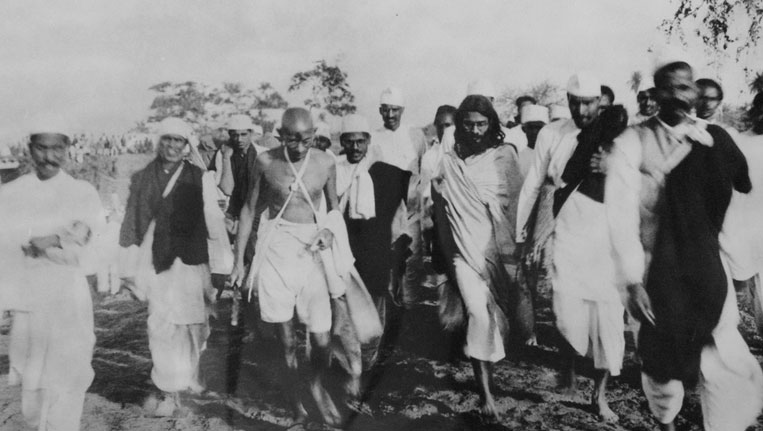
Source: https://bit.ly/2OS8eZ8
Talking about Gandhi’s contribution to the Indian Freedom Movement, he along with the other freedom fighters like Azad Hind Fauj and Netaji Subhash Chandra Bose compelled the British to leave India. He fought without violence to set India free from the British Rule. So let’s dig into what are the contributions made by Gandhi to India Freedom Movement.
Champaran Satyagraha
Stepping into the Indian Freedom Politics after returning from South Africa, Champaran agitation in Bihar was Gandhi’s first active involvement which was India’s first civil disobedience movement. The farmer’s in the Champaran village of Bihar were being forced to grow Indigo and were being tortured if they protested. The farmer’s had to seek help from Gandhi and with the help of a non-violent protest, Gandhi managed to win concessions from the authority. The Champaran peasant movement was launched in the year 1917-18 and the landlords under the British government were made to sign an agreement that benefited the farmers to have more control over their own land.
Kheda
After the Champaran Satyagraha Movement, Kheda Satyagraha of 1918 was the second largest. It took place when Kheda, a village in Gujarat, was badly hit by flood, and the peasants had suffered a famine and this had resulted in a large-scale failure of crops. With this, the local farmers appealed to the rulers to waive off the taxes. It was then Gandhi along with Sardar Vallabhbhai Patel, Indulal Yagnik, N.M. Joshi, Shankerlal Pareekh and several others started a signature campaign where peasants pledged non-payment of taxes. In 1918, the Government relaxed the conditions of the payment of revenue tax until the famine ended.
Khilafat Movement
After the first World War, the Khilafat Movement was an agitation by Indian Muslims, allied with Indian nationalists as they feared for the safety of their Cliph or the religious leader. For this, they came up with a worldwide protest to fight against the collapsing statues of the Caliph. It was then Gandhi’s influence on the Muslim population was remarkable. He became a prominent spokesperson of the All India Muslim Conference and returned the medals he had received from the Empire during his Indian Ambulance Corps days in South Africa. His active presence in the Khilafat made him the real national leader in just a short time.
Non-Cooperation Movement
Gandhi being the true observer realised that the existence of British in India is there because of the cooperation that they have received from the Indians. Keeping this thought in mind, he called for a non-cooperative movement. Gandhi had realised that the British had been able to be in India only because of the cooperation they received from the Indians. Keeping this in mind, he called for a non-cooperation movement after the Jallianwala Bagh Massacre in 1920-22. The movement was an initiate to resist the British rule and set the goal of Swaraj or self-governance in India, which since then became the motto of the Indian freedom movement.
Salt March
Salt March which is even known as the Dandi Movement is yet another freedom movement that is considered to be a pivotal incident in the history of India. Indian citizens were forced to buy the vital mineral from their British rulers, who were exercising a monopoly over the manufacture and sale of salt with a heavy salt tax. It was then, Gandhi led an act of nonviolence in colonial India to produce salt from the seawater in the coastal village of Dandi (now in Gujarat). Along with the large crowd, he started the salt march to defy the British policy and with each passing day, an increasing number of people joined the Salt Satyagraha.
Quit India Movement
The Quit India Movement which is also called the India August Movement was a movement launched by Mahatma Gandhi on 8 August 1942 at the Bombay session of the All-India Congress Committee, during World War II, demanding an end to British Rule of India. British started recruiting Indians for the war and Gandhi wasn’t in favour of it so he protested strongly stating that Indians cannot be involved in a war as India itself is not a free country. The argument exposed the two-faced image of the colonisers and within half a decade, they were out of this country.
Other than these, there were other movements too that Gandhi was involved into that I haven’t covered here. Out of all the others, these were the prime role of Mahatma Gandhi in India’s Independence ones for which Mohandas Karamchand Gandhi came to be known as Mahatma Gandhi and the real hero.
Interesting Facts You Didn’t Know About Mahatma Gandhi
So far, we talked about the what Gandhi did and his contribution to the society, but despite the worldwide fame, there are still some of the interesting and important facts about Gandhi that probably you didn’t know. So without making you wait much, let’s look into it.
- When in school, Gandhi was popular by the nickname Moniya.
- In 1930, he was the Time’s Magazine Man of The Year.
- Gandhi was 13 years old when he married Kasturba was 14 at the time of marriage.
- When Gandhi was in England, he learnt to dance and play violin which he later gave up to live a simple lifestyle.
- Gandhi spoke English in Irish accent as his first English teacher was an Irish.
- He wrote his autobiography ‘My Experiments with Truth’ in the Gujarati Language which was later translated to English in the year 1940.
- Gandhi’s birthday is recognised as the International Day of Non-Violence by the United Nations.
- Mahatma Gandhi was nominated five times for the Nobel Peace Prize which he was going to receive in the year 1948. But he has assassinated that January and the Nobel Committee does not award posthumous prizes.
- M. K. Gandhi was responsible for the Civil Rights movement in 4 continents and 12 countries.
- Great Britain, released a stamp honoring him, 21 years after his death
- Wherever Mahatma Gandhi went, we walked/traveled nearly 18 kilometers a day throughout his lifetime.
- Artifacts related to Gandhiji including the clothes he wore when he was shot are still preserved in Gandhi Museum of Madurai.
- Apple co-founder Steve Jobs was the fan of Mahatma Gandhi.
- There are 54 major roads (excluding the smaller ones) in India, and more than 50 roads outside India that are named after Mahatma Gandhi.
- Mahatma Gandhi thought of dissolving the Congress a day before he died in the year 1948.
- He was shot dead by an Indian when he was going to attend a prayer on 30 January 1948.
Places Visited by Gandhi During Indian Freedom Struggle
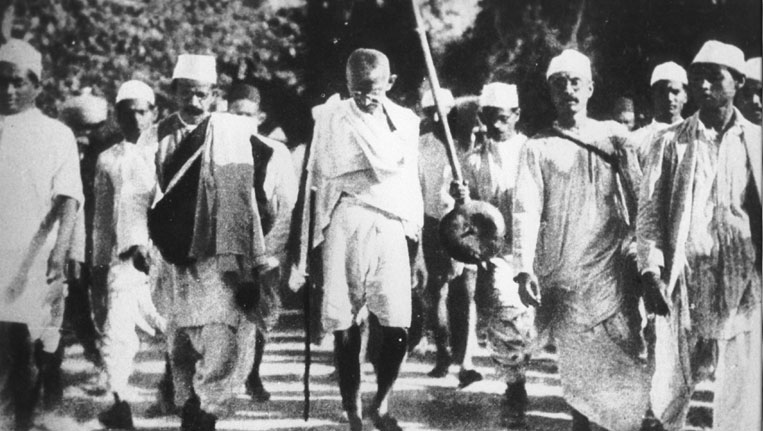
Source: https://bit.ly/2OftET0
Leading a long and resilient freedom struggle, Mahatma Gandhi with his sheer grit and effective tools of truth and non-violence met his purpose i.e., to set India free. During his fight for India’s freedom, he travelled extensively across India and left his mark at a number of places. So this Gandhi Jayanti, if you are planning to visit places associated with Mahatma Gandhi, grab on to this great opportunity to explore the places that the great man has done there for the country.
Sabarmati Ashram, Ahmedabad
A visit to Ahmedabad will take you to Sabarmati Ashram (on the banks of Sabarmati River) where Mahatma Gandhi along with his family lived for over 12 years. It was this place from where he started his world-famous Salt March or Dandi Movement. Located at a distance of 5 km from Ahmedabad, Sabarmati Ashram has been visited by almost every major leader of the freedom struggle and today it is being visited by tourists coming from across the globe.
Gandhi Smriti, New Delhi
Formerly known as the Birla House or Birla Bhavan, a visit to Gandhi Smriti will take you back to the time where Gandhi spent the last 144 days of his life. The place is now a museum dedicated to Mahatma Gandhi and on your visit, you would be able to witness the popular exhibits in the museum that include the room in which he lived and the prayer ground where he was martyred. Today, the Gandhi Smriti Museum has become a popular tourist place among the travellers coming to the capital city of India. Also, don’t miss out on visiting the National Gandhi Museum which is yet another must visit place as it will help you explore and learn more about Gandhi.
Mani Bhavan Gandhi Museum, Mumbai
To witness Gandhi’s political greatness, plan your trip to Mumbai and head to Mani Bhavan where Mahatma Gandhi initiated the Non-Cooperation, Satyagraha, Swadeshi, Khadi and the Khilafat movements along with other legends of India. Entering the place, you would see a library with the statue of Mahatma Gandhi. Then the staircase dotted with Gandhi’s pictures will take you to the photographs of his childhood till his assassination. Right opposite the room that is on the second floor there is a hall where paintings and photographs of his lifetime are displayed.
Aga Khan Palace, Pune
Located near River Mula in Pune, Aga Khan Palace was originally built by Sultan Muhammad Shah Aga Khan III in 1892, the place served as a prison for Mahatma Gandhi, his wife Kasturba Gandhi, and Secretary Mahadevbhai Desai right after the launch of the Quit India movement. Also, Kasturba Gandhi and Mahadevbhai Desai passed away while in captivity.
Dandi Village, Gujarat
The small coastal village in the Navsari district of Gujarat, Dandi was never heard of until Mahatma Gandhi chose it as an endpoint of the Salt Satyagraha. A visit to Dandi will not just give the historical significance, but the nondescript town of Dandi is worth a visit if you are looking to chill, relax and watch the views at the Dandi Beach.
Champaran District, Bihar
As already discussed above regarding the Champaran Satyagraha, you can add Champaran in your travel list if you are looking to travel for historic tourism places that Gandhi himself did.
Bangalore
Not just once but many times, Bangalore has been visited by Gandhi. The very first visit which was made in the year 1934, when his agenda was to collect money for the ‘Harijan Fund’. The Gandhi Bhavan a popular tourist attraction in the city which is visited by tourists all around the year. The place has preserved many records from the visit of the Mahatma. So if you are thinking of travelling to South India then, Bangalore can be added.
Assam
Mahatma Gandhi has paid a visit to the beautiful Assam four times in his lifetime for the Khadi tour where he explained the importance and need of Khadi work to the Assamese people. Yes, if you haven’t visited Assam, now is the time when you can make the most out of your travel plans by visited the beautiful state of India while remembering Gandhi.
Hyderabad
As Mahatma Gandhi was of the belief and had a concern in bringing the people of Andhra Pradesh to join the independence movement, he visited Hyderabad in the year 1934 to propagate the Harijan Movement. On your visit to Hyderabad, a visit to the Mahatma Gandhi digital museum would take you to modern technology that is used to display the great works of the father of India.
Calcutta
Calcutta is yet another city where you can plan your trip. It is the place where Mahatma Gandhi celebrated Indian Independence. During this time when Bengal witnessed communal violence and was in a disturbed condition. So it was then, Gandhi who played a vital role in bringing peace in the city and the entire state with his efforts.
Shimla
Planning to travel to the hill station? Then it has to be Shimla. Yes, Gandhi made his visit to Shimla as it was famous during the pre-independence era too. Records found that he visited Shimla thrice in his lifetime and for the last time that he visited Shimla was in the year 1946 when he held a discussion on Cripps mission. So, a visit to the picturesque hill station is where you can plan your trip when looking for a soothing and relaxing holiday.
Kerala
Gandhi played an important role in destroying the beliefs of the untouchables in the Kerala state of India. His speech in the year 1925 encouraged much youth to join the independence movement. Kerala which was earlier sectioned into two princely states of Travancore and Kochi is today a world-renowned tourist attraction.
Apart from these places, you can also plan your trip to Sevagram which is 7 km away from Wardha a town in Maharashtra, a visit to Porbandar where Gandhi was born to make a visit to the Kirti Mandir which is now converted into a museum exhibiting historic photographs, some of Gandhi’s possessions and several books are written by him and on him.
Other Places Visited by Mahatma Gandhi
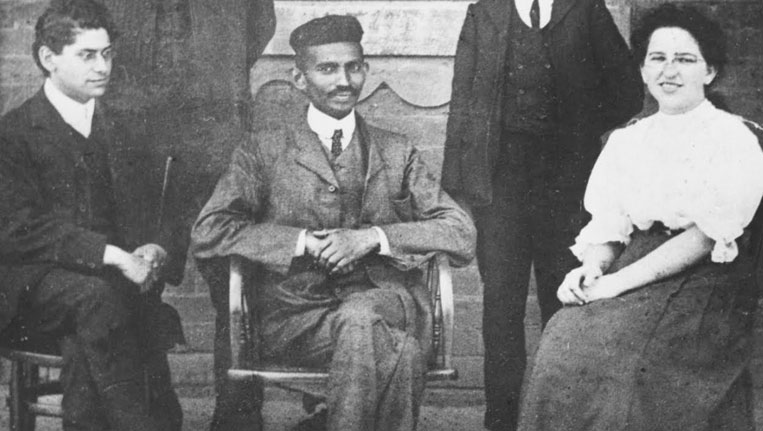
Source: https://bit.ly/2NI0Dji
Not just travelling in India, but before leading the Indian Freedom Movement, Gandhi visited few of the foreign countries. With higher education of Mahatma Gandhi to other purposes of visiting the countries are mentioned below please take a look at the international places related to Mahatma Gandhi:
England
After completing his studies in India, a friend of Gandhi hoped that if young Gandhi hoped to take his father’s place in the state service who died in the year 1885, he suggested him to take the path of becoming a barrister which he could do in England. Without giving in a second thought, Gandhi jumped at the idea and was set sail for England in the year 1888. Reaching London, Gandhi had to struggle a lot as the first few days were miserable for him. Everything appeared to be strange to him including people, their ways and even their dwellings. Being a vegetarian, he had to face additional inconvenience. He spent three years stay living a very simple lifestyle and got the opportunities for widening horizons and a better understanding of religions and cultures. Finally, he successfully completed his degree at the Inner Temple and was called to the Bar on 10 June 1891. He got enrolled in the High Court of London; but later that year he left for India.
South Africa
Coming from England, Gandhi attempted to practice law in India, but unfortunately, he found that he lacked both knowledges of Indian law and self-confidence at trial. It was then, Gandhi returned back to Porbandar. Meanwhile, a representative of an Indian business firm situated in the Transvaal (now Gauteng), South Africa offered him employment. He decided to move to Durban in the South African state of Natal in the year 1893. Above all, his stay in South Africa was the crucible that shaped Gandhi’s identity as an Indian political activist and was an important prelude to his return to India which could be seen in his initiative to secure India’s independence from the British.
Sri Lanka
Gandhi visited Sri Lanka in the year 1927. Later when he was invited in Jaffna Youth Congress who admired him and were following in his footsteps of civil disobedience for Swaraj. During his stay in Jaffna for three days, Gandhi visited many schools and villages throughout where he delivered speeches and was embraced by the locals.
The Inspiring Quotes from Mahatma Gandhi That We Must Follow
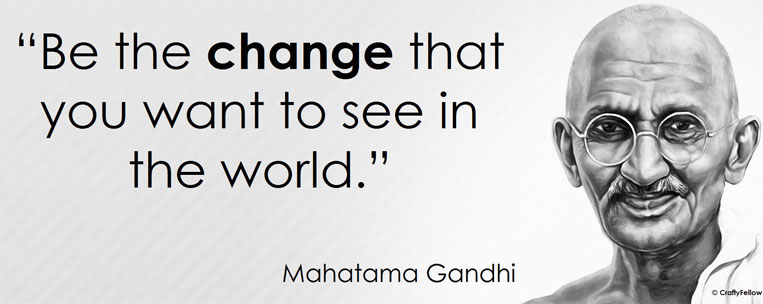
Source: https://bit.ly/2xTrFJM
Thinking about Mahatma Gandhi and his great works done, I get inspired by him in terms of wisdom. Yes, his approach to life and his testimony clearly depicts that you do not actually need the physical capacity to accomplish aim but it is the strong will that should come out from one’s own heart and mind. We must vehemently go after what we want in life. The great man truly commands a huge amount of strength and respect. I mean, what an inspiring and authentic way to live!
With this please allow me to share some of the best & famous quotes of Mahatma Gandhi that we can implement in our lives to live a purposeful life ahead.
- “The weak can never forgive. Forgiveness is the attribute of the strong.”
- “Confession of errors is like a broom which sweeps away the dirt and leaves the surface brighter and clearer. I feel stronger for confession.”
- “In a gentle way, you can shake the world.”
- “Truth stands, even if there be no public support. It is self-sustained.”
- “I do not want to foresee the future. I am concerned with taking care of the present. God has given me no control over the moment following.”
- “Nearly everything you do is of no importance, but it is important that you do it.”
- “Live as if you were to die tomorrow. Learn as if you were to live forever.”
- “A man is but a product of his thoughts. What he thinks he becomes.”
- “An ounce of patience is worth more than a tonne of preaching.”
- “A no uttered from the deepest conviction is better than a ‘Yes’ uttered merely to please, or worse, to avoid trouble.”
- “Happiness is when what you think, what you say, and what you do are in harmony.”
- “A coward is incapable of exhibiting love; it is the prerogative of the brave.”
- “Service which is rendered without joy helps neither the servant nor the served.”
- “The best way to find yourself is to lose yourself in the service of others.”
- “If I have the belief that I can do it, I shall surely acquire the capacity to do it even if I may not have it at the beginning.”
Must Read Books Related to Mahatma Gandhi
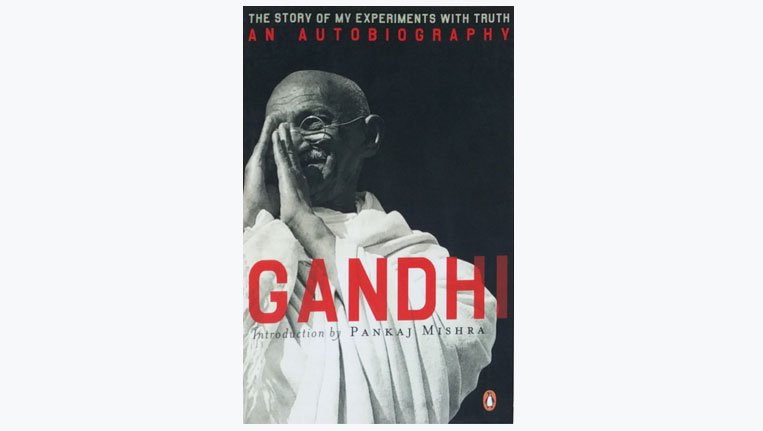
The man, who had made the whole country respond to his call and live an independent life, has always been much talked and written about. If you would like to read and get authentic information about Mahatma Gandhi, then here is the list of books that reveals his life story in all the layers. Right from his life as a child to South Africa and then back to India and the steps taken for the Indian Freedom Movement and more, the book will give you a clear picture of the life of Mahatma Gandhi. So, take a look at the best book on Mahatma Gandhi:
- The Story of My Experiments with Truth
Author: M.K. Gandhi
When it comes to choosing a book to know about Gandhi in detail, then nothing can beat “The Story of My Experiments With Truth.” The classic autobiography of Gandhi recounts the incidences of his life that shaped him and his beliefs. Also, how he developed the idea of nonviolence resistance to the tyranny of the colonial rule.
Author: Judith M. Brown
Reading the book will give a new and surprising picture of Gandhi’s life, where the author has presented the strength of Gandhi which he used out of his own weakness. Judith has even described deeply about his life in South Africa, career as a barrister and his struggle against racism in South Africa.
- Gandhi: His Life and Message for the World
Author: Louis Fischer
The book has been written by Louis Fisher who was a close friend of Gandhi and for this, you will find an extraordinary story of how a humble man with a mission changed the destiny of India. Hailing from the middle-class family, he rose up as the powerful leader that the world still remembers. Read the book to get an unbiased account of the life history of Mahatma Gandhi, lifestyle and message Gandhi has left for the world.
Author: Mahatma Gandhi
Hind Swaraj or Indian Home Rule was published in the year 1909, when the end of British rule in India was no less than a dream. Reading the book, you’ll come to realise how he has expressed his views on Swaraj, Modern Civilization and Mechanisation. Also, has envisioned his goal as a reality, and a path to that goal as well.
- Mahatma Gandhi: His Life and Ideas
Author: Charles F. Andrews and Arun Gandhi
The authors of the book have brought out a warm and personal biography of Gandhi. Right from the non-violence to his other principles, how under harsh situations, nothing could make Gandhi deviate from his ideals. So if you are interested to know about the beliefs of Gandhi, then go ahead with ‘Mahatma Gandhi: His Life and Ideas’ that would be the perfect one for you.
- Great Soul: Mahatma Gandhi and his Struggle with India
Author: Joseph Lelyveld
Joseph Lelyveld, Pulitzer prize winning writer, came up with an amazing book describing the struggle of Mahatma Gandhi that he had to face while fighting for the freedom of India. The author has given an insight of both Gandhi’s failures and achievements and also disappointment faced by people when struggling to bring social change.
- The Life of Mahatma Gandhi
Author: Louis Fischer
As already discussed above, Louis Fisher was the friend of Gandhi apart from being a genius historian and his another book on him “The Life of Mahatma Gandhi” talks about Gandhi’s life and accomplishments and how he led the whole nation on its epic journey of the struggle for freedom. Reading the book, you’ll be getting a glimpse of the shrewd and unique ways employed by Gandhi to bring about peace and freedom in India. In short, the author has evaluated what made Gandhi an inspiring soul for the youth of India as well as elderly people.
- Mahatma Gandhi the Father of the Nation
Author: Subhadra Sen Gupta
Subhadra Sen Gupta in her book gives us a glimpse of how the simple and humble man Mahatma Gandhi ate salt less vegetable and walked 240 miles from Sabarmati Ashram to Dandi to break the salt law, changed the ideas and beliefs of the people. She has also written about Mahatma Gandhi’s passion for peace and truth. Yes, the world has changed a lot since the time of Gandhi but his teachings and ideas are still being implemented by all us even in today’s generation.
Author: Mahatma Gandhi
The book will take you to Gandhi’s views on the decentralisation of economic and political power through the organisation of Village Panchayats. This book contains Gandhi’s views and different aspects of the rural life including agriculture, village, industry, transport, basic education, health and hygiene and more.
Gandhi’s Assassination
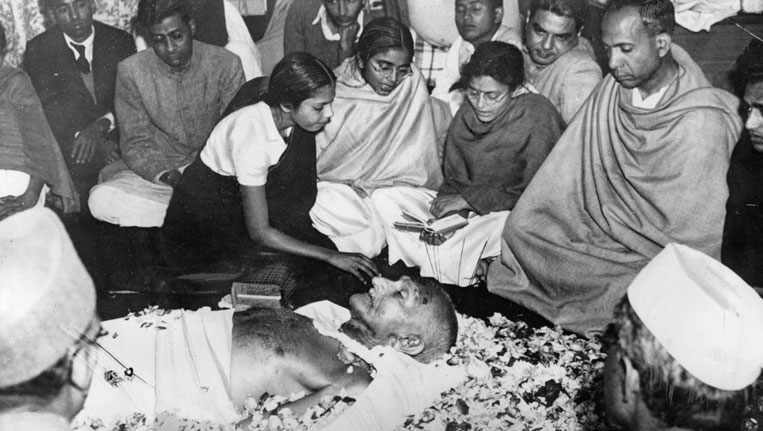
Source: https://bit.ly/2JWRVs0
On January 30, 1948, when Gandhi was weakened from repeated hunger strikes, he was led him from his living quarters in New Delhi’s Birla House to a prayer meeting. It was then a Hindu extremist out of his hatred of the secular ideology of Gandhi, knelt before Mahatma publicly before pulling out the pistol and shooted him three times.
What the World Would Be Like If Mahatma Gandhi Didn’t Exist?
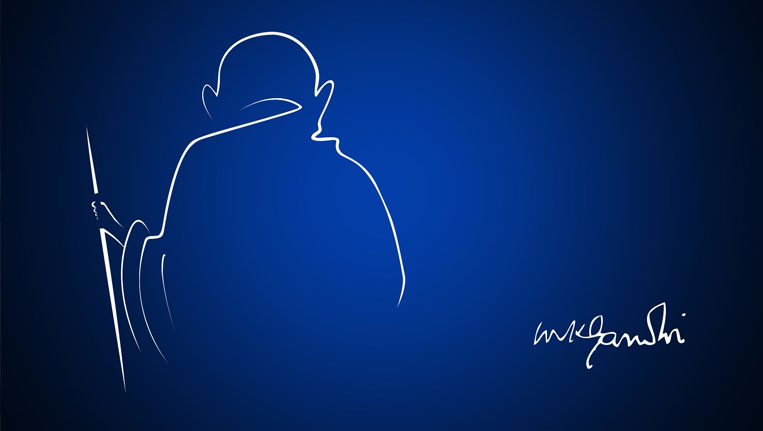
Source: https://bit.ly/2Q9m2ih
The contribution of Gandhi to the achievement of Indian Independence is invaluable and cannot be enumerated in words but I thought of sharing my views on the topic.
Knowing the history, we are aware how the freedom was only restricted to the upper educated class. It won’t be wrong if I say, with or without Gandhi India (one of the Greatest Global Legends) would have attained independence but the way he took the initiative i.e., through non-violence, if he wouldn’t have been there, the achievement of Indian independence could have been violent.
Yes, Indian Independence was inevitable, but the way Gandhi moulded things out of his humbleness was truly unimaginable. The benchmark and inspiration related to non-violence, extremism and gender equality that he has left for us keep us motivated for the peaceful approach towards life. It isn’t really the case, that he never failed in his mission, but it was the consistent effort made by him that resolves the issue and made India free from the British rule.
Furthermore, if we elaborate it, Gandhi coined the term “Satyagraha” for the peaceful resistance which means ‘Grasp with Truth’. British got agitated by this as they had no idea how to tackle it. He was the unifying force to integrate each and every section of Indian society with the aim of spreading peace all around the nation as well as within the hearts of human. So without him, it would have been independent but fragmented.
Lastly, I would like to say, we all are individuals and it is obvious that we all will differ from each other’s ideas but the truth no matter what the opinions are we all still respect him (Agreed?).
With this, our short walk into the life of Mahatma Gandhi comes to an end. Mahatma Gandhi is a true influencer for the entire nation. Not just in India, Gandhi’s life and teachings have inspired many liberationists of the 20th Century, including Dr. Martin Luther King in the United States, Nelson Mandela, Steve Biko in South Africa, and Aung San Suu Kyi in Myanmar. With his humble heart, Gandhi made himself heard in the farthest ends of the world and there isn’t doubt about it.
Published: 26 Sep, 2018
Born and brought up in Assam- ‘The Land of Tea Gardens’, Swati is a Travel Writer who yearns to travel around the whole world someday. Coming from one of lush-green and peaceful states of India, her love for nature and rain is beyond imagination. She is an observant and is keen to explore more about the things that comes her way which could be clearly seen in her write ups. Other than this, she is a foodie and can do anything for food that is made out of cheese especially- The Alfredo Penne Pasta!



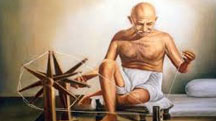 17 Nights / 18 Days
17 Nights / 18 Days 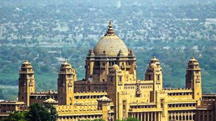 17 Nights / 18 Days
17 Nights / 18 Days 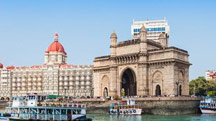 14 Nights / 15 Days
14 Nights / 15 Days 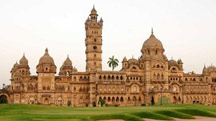 8 Nights / 9 Days
8 Nights / 9 Days 




 10 Nights / 11 Days
10 Nights / 11 Days 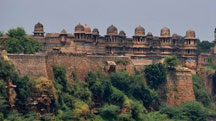 14 Nights / 15 Days
14 Nights / 15 Days 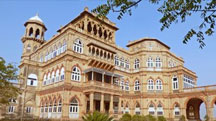 4 Nights / 5 Days
4 Nights / 5 Days 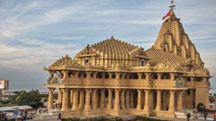 4 Nights / 5 Days
4 Nights / 5 Days 





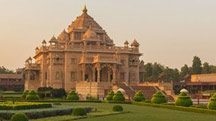 9 Nights / 10 Days
9 Nights / 10 Days 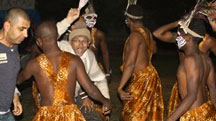 12 Nights / 13 Days
12 Nights / 13 Days  9 Nights / 10 Days
9 Nights / 10 Days  2 Nights / 3 Days
2 Nights / 3 Days 








